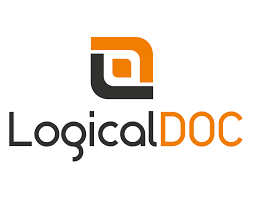Key Takeaways
- CE keeps dental professionals abreast of technological innovations and best practices.
- Ongoing education enhances patient care and satisfaction.
- Meeting CE requirements is crucial for maintaining licensure and compliance.
Introduction
Dental care is an evolving field that demands a commitment to staying informed and up-to-date. As new techniques and technologies emerge, dental professionals must engage in ongoing learning to maintain the high standards their patients expect. Participating in dental continuing education courses offers a direct pathway to acquiring the latest knowledge and skills, ensuring practitioners stay ahead in their field and deliver the best possible patient care.
These educational opportunities are not just a means of professional development, as they represent a vital step in adapting to the rapid innovations present in modern dentistry. By enrolling in dental continuing education courses, dentists, hygienists, and assistants gain access to targeted learning experiences that cover emerging best practices, advanced treatment modalities, and evolving standards of care.
Staying Current with Technological Advancements
The dental industry is experiencing a technology revolution. Tools such as digital scanners, three-dimensional imaging, and computer-aided design/manufacturing (CAD/CAM) systems are revolutionizing diagnostics and restorative procedures. Staying current with these advancements is critical for improving practice efficiency and patient satisfaction. Learning to utilize innovative systems, such as digital X-rays or intraoral cameras, not only streamlines workflow but also enhances diagnostic capabilities, enabling dental professionals to create more accurate and patient-friendly treatment plans.
Online and in-person CE courses enable practitioners to confidently adopt new technologies, reducing the learning curve for modern equipment and allowing dental teams to deliver state-of-the-art care, thereby positioning their practice as a leader in dental innovation.
Enhancing Clinical Skills and Patient Care
Modern dental patients seek both comfort and excellence in their care. Advancements such as minimally invasive treatments and adhesive dentistry allow practitioners to provide better outcomes with less discomfort. Comprehensive CE programs offer dentists and their teams hands-on training in these advanced techniques, ensuring they can deliver the most up-to-date, evidence-based care tailored to each patient’s unique needs. This ongoing education empowers dental professionals to rethink traditional approaches—resulting in improved patient trust, retention, and overall satisfaction.
Meeting Licensing and Regulatory Requirements
Licensing boards in virtually every jurisdiction require dental professionals to complete a minimum number of Continuing Education (CE) hours as a condition for license renewal. These standards are established to ensure that dental teams, including dentists, hygienists, and assistants, remain highly knowledgeable, ethical, and up-to-date with the latest advancements and industry guidelines. Neglecting or failing to meet these requirements can lead to serious professional consequences, such as fines, penalties, or even the suspension or loss of licensure. Beyond mere compliance, CE courses also play a crucial role in emphasizing critical aspects like patient safety, informed consent, and effective risk reduction strategies, which are essential for maintaining the trust and well-being of patients. Collectively, these educational standards help to further strengthen the overall integrity, quality, and safety of dental care delivery across the healthcare system.
read more : Introduction To The Software Error RCSDASSK
Expanding Career Opportunities
Continuing education is not just about maintaining competencies, as it’s a powerful way to unlock new career pathways. From orthodontics and implantology to cosmetic dentistry and pediatric care, CE courses equip dental professionals to specialize or expand their practice offerings. By gaining credentials in high-demand areas, practitioners increase their value to both employers and patients, and open the door to higher income potential and leadership roles within their organizations. The added knowledge can also give professionals a competitive edge in the job market, helping them stand out in a challenging environment.
Building Professional Networks
Continuing education settings present excellent opportunities to build lasting professional relationships. Whether through in-person workshops, hands-on labs, or live webinars, these events foster collaboration among peers, offer access to experienced mentors, and connect practitioners with thought leaders in the industry. Such connections can lead to mentorship opportunities, collaborative projects, and patient referrals. The shared commitment to lifelong learning helps foster a sense of community and mutual support within the dental profession.
Adapting to Changing Patient Expectations
Today’s patients are more informed, educated, and proactive about their oral health and overall well-being. They expect transparency from their healthcare providers, clear and straightforward communication, and flexible treatment options that cater to their individual needs and lifestyles. Continuing Education (CE) courses increasingly focus on patient engagement and education, teaching dental practitioners how to establish and maintain trust through effective communication, empathy, and personalized care plans. This emphasis on patient-centered dentistry allows dental professionals to better understand their patients’ unique questions, concerns, and preferences, which ultimately leads to increased patient loyalty, higher satisfaction levels, and improved health outcomes. By fostering a collaborative relationship, dental teams can motivate patients to participate actively in their treatment and long-term oral health maintenance.
Fostering a Culture of Excellence
When dental practices prioritize continuing education, they cultivate a culture of excellence that benefits both staff and patients. A team that is motivated to pursue professional growth is more likely to collaborate effectively, reduce errors, and consistently provide outstanding outcomes. This positive workplace environment translates into higher morale and job satisfaction, while patients benefit from the collective expertise and shared commitment to innovation and best practices.
Investing in continuing education is foundational to elevating both individual careers and the dental profession as a whole. By embracing lifelong learning, dental teams can confidently navigate industry changes, uphold the highest standards of care, and support patients in achieving the best possible oral health outcomes. In a rapidly changing healthcare landscape, CE is not only a competitive advantage but also an essential element of professional success and patient trust.




